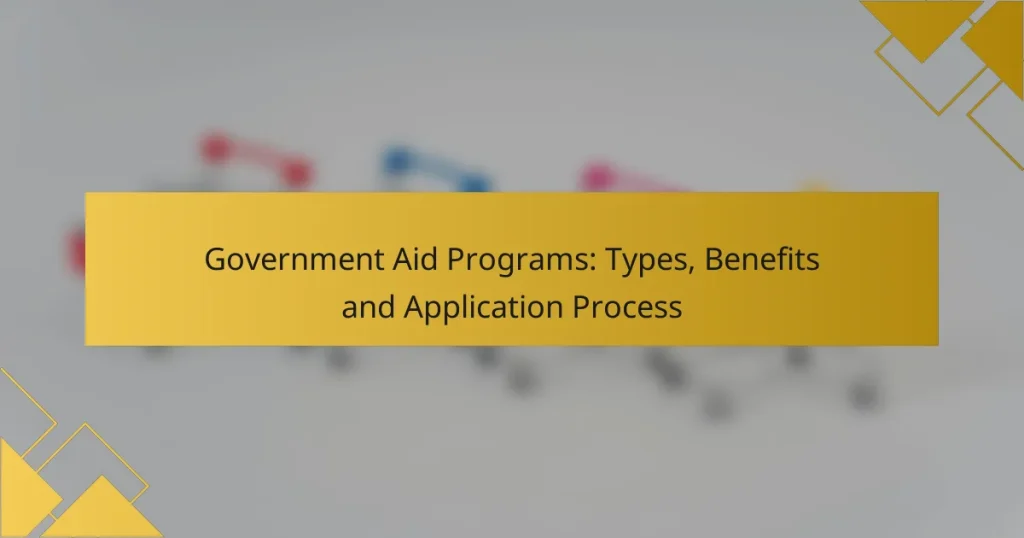
Government Aid Programs: Types, Benefits and Application Process
Government aid programs in the United States are designed to assist individuals and families facing…
Humanitarian aid resources for COVID-19 are crucial for supporting individuals and communities impacted by the pandemic. In the United States, a variety of federal assistance programs and public health resources are available to help navigate the challenges posed by the virus. Understanding the funding channels and best practices for aid distribution can significantly enhance the effectiveness of these efforts.

Government aid programs in the United States are designed to assist individuals and families facing financial hardships. These programs encompass a range of services, including financial support, healthcare access, and educational opportunities, ultimately enhancing the quality of life for many. The application process varies, allowing individuals to apply online, in person, or by mail, ensuring…
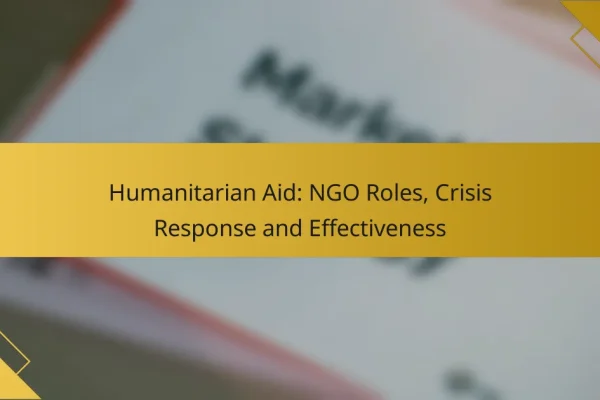
Non-governmental organizations (NGOs) are vital players in humanitarian aid, offering immediate assistance during crises and implementing strategies for long-term recovery. They coordinate with local authorities to ensure efficient resource distribution and advocate for vulnerable populations, ultimately fostering community resilience. The effectiveness of their efforts can vary based on factors such as funding, coordination, and engagement…
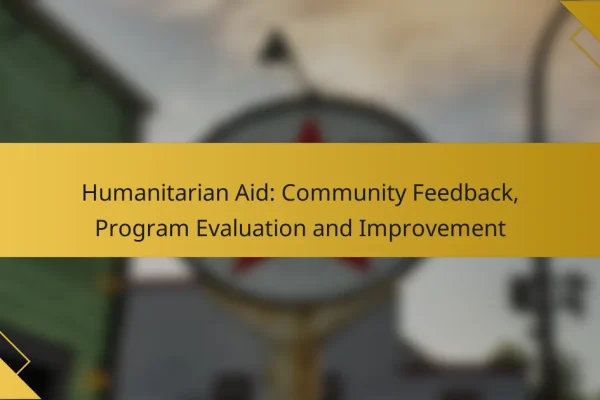
Community feedback plays a crucial role in enhancing humanitarian aid programs by aligning them with the actual needs and preferences of affected populations. By actively soliciting input from community members and implementing structured feedback mechanisms, organizations can create more effective interventions and improve program outcomes through continuous evaluation and adaptation. How can community feedback improve…
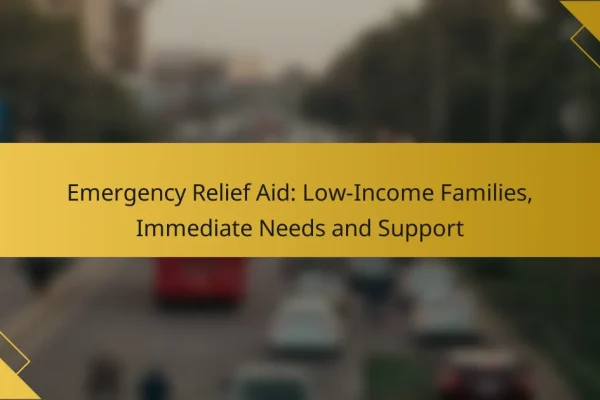
Emergency relief aid plays a crucial role in supporting low-income families facing immediate needs during crises. Various programs, including federal assistance, state-specific initiatives, and nonprofit support, provide essential resources to help these families navigate challenging situations. Eligibility typically requires proof of low-income status and residency, ensuring that aid is directed to those who need it…
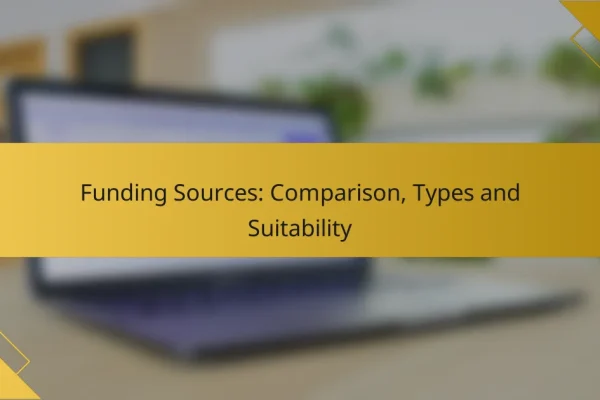
Choosing the right funding source is crucial for startups, as it can greatly influence their growth and success. With options ranging from venture capital and angel investors to crowdfunding and SBA loans, each source offers distinct advantages and considerations. By understanding the characteristics and suitability of these funding types, entrepreneurs can make informed decisions that…

Food distribution programs are vital in addressing food insecurity among vulnerable communities by ensuring access to nutritious meals. These initiatives not only meet immediate dietary needs but also contribute to long-term health improvements, fostering overall well-being for individuals and families. Through local organizations and government efforts, these programs play a crucial role in enhancing nutrition…
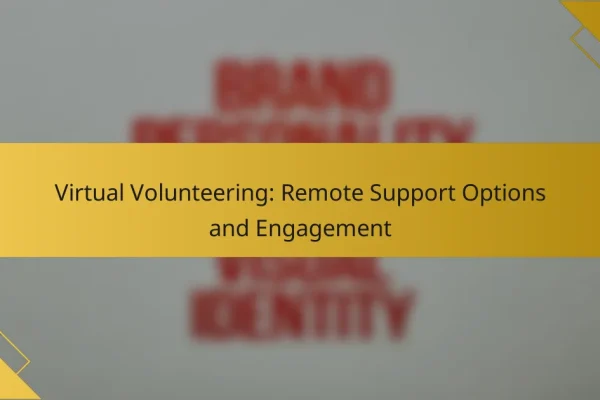
Virtual volunteering provides a unique opportunity for individuals to support various causes from the comfort of their homes. Through online platforms, volunteers can connect with organizations in need of remote assistance, offering skills such as tutoring, mentoring, and event planning. This flexible approach not only enhances community engagement but also allows for meaningful contributions regardless…
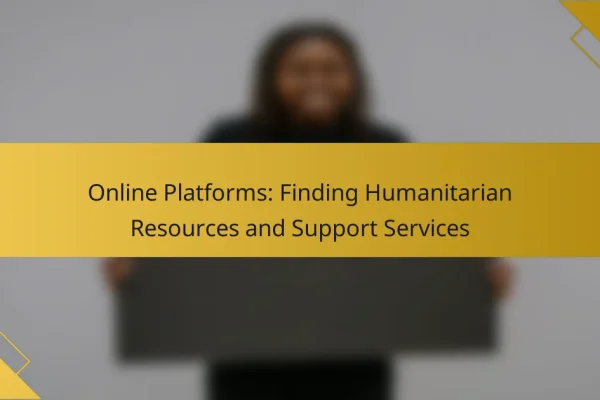
In the USA, numerous online platforms provide essential humanitarian resources and support services, linking individuals and organizations to vital aid and information. These tools facilitate access to funding, volunteer opportunities, and specialized assistance for refugees, including legal aid and housing support, while also enhancing disaster response coordination through improved communication and resource management. What online…
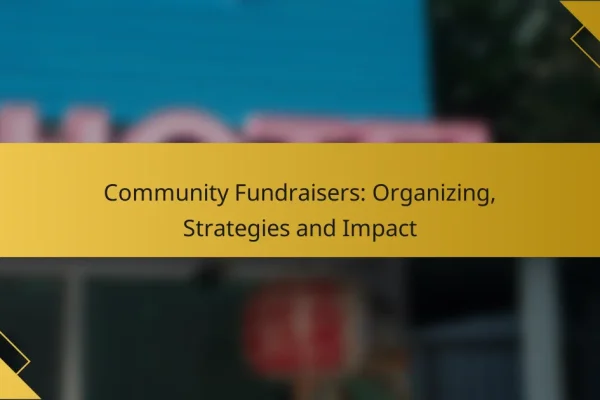
Community fundraisers play a vital role in supporting local initiatives and fostering a sense of togetherness. To ensure success, it is essential to plan meticulously, set clear objectives, and engage the community through effective promotion. By employing strategic approaches such as peer-to-peer fundraising and leveraging local business sponsorships, organizations can significantly enhance their fundraising impact….
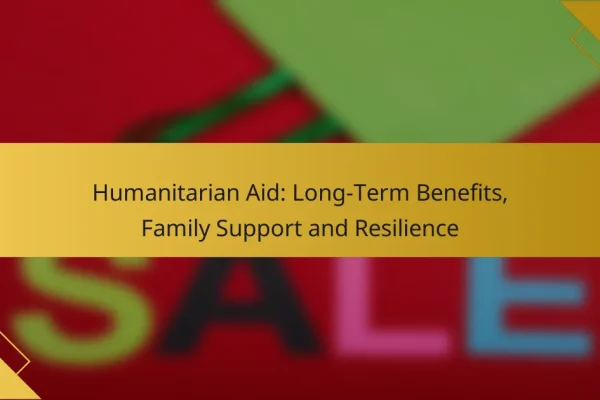
Humanitarian aid is vital for affected communities, offering essential support that fosters long-term benefits such as improved health, economic stability, and enhanced education access. By focusing on family support and resilience, these initiatives help families rebuild their lives after crises, ensuring they have access to basic needs while promoting self-reliance. Ultimately, strengthening resilience enables communities…
In the United States, various humanitarian aid resources are available to support individuals and communities affected by COVID-19. These resources include federal assistance programs, health guidelines, and support from public health organizations.
The Federal Emergency Management Agency (FEMA) provides critical resources for disaster response, including COVID-19 relief. They offer financial assistance for medical supplies, personal protective equipment, and community support initiatives.
Individuals and organizations can access FEMA's resources through their official website or local emergency management offices. It's essential to stay updated on eligibility requirements and application processes, which may vary by state.
The World Health Organization (WHO) offers comprehensive guidelines for managing COVID-19, focusing on prevention, treatment, and vaccination strategies. These guidelines are designed to help governments and health organizations implement effective response measures.
WHO's resources include recommendations for healthcare facilities, public health campaigns, and community engagement strategies. Following these guidelines can enhance local efforts to mitigate the virus's impact and promote public health safety.
The Centers for Disease Control and Prevention (CDC) provides extensive support and information regarding COVID-19. This includes data on infection rates, vaccination updates, and public health recommendations tailored to various demographics.
CDC resources are accessible online and include toolkits for businesses, schools, and healthcare providers. Utilizing these resources can help communities implement effective COVID-19 prevention strategies and stay informed about ongoing developments.
Organizations can access COVID-19 aid funding through various channels, including government grants and private foundation support. Understanding the application processes and eligibility criteria is essential for securing these funds.
The U.S. Department of Health and Human Services (HHS) provides grants specifically aimed at combating COVID-19. These grants are often targeted towards healthcare providers, community organizations, and research institutions.
To apply, organizations must submit proposals that outline their intended use of funds, demonstrating how they will address COVID-19 challenges. It is crucial to adhere to deadlines and guidelines specified in the grant announcements.
The Bill & Melinda Gates Foundation offers funding opportunities focused on global health initiatives, including COVID-19 response efforts. Their grants typically support innovative solutions and scalable projects that can significantly impact public health.
Organizations interested in funding should review the foundation's priorities and submit proposals that align with their mission. Engaging with foundation representatives can provide insights into the application process and increase the likelihood of funding approval.
The best practices for distributing COVID-19 aid focus on ensuring efficiency, equity, and community engagement. Prioritizing local partnerships and utilizing existing health infrastructures can significantly enhance the effectiveness of aid distribution.
Forming partnerships with local NGOs is crucial for effective COVID-19 aid distribution. These organizations often have established trust within communities, which can facilitate smoother delivery of resources. Collaborating with local NGOs can also help identify the most vulnerable populations in need of assistance.
When engaging with NGOs, consider their experience, capacity, and local knowledge. Establish clear communication channels and set mutual goals to ensure that aid efforts are aligned. Regular assessments can help adapt strategies based on community feedback and changing needs.
Community health workers (CHWs) play a vital role in distributing COVID-19 aid effectively. They are often familiar with the local context and can provide essential information about health resources and services. CHWs can also help in educating the community about COVID-19 prevention measures and available aid.
To maximize the impact of CHWs, provide them with proper training and resources. Ensure they have access to personal protective equipment (PPE) and communication tools. Regularly evaluate their performance and gather feedback to improve the aid distribution process and address any challenges they face.
Organizations should consider alignment with community needs, program effectiveness, and sustainability when selecting COVID-19 aid programs. These criteria ensure that the aid provided is relevant, impactful, and capable of addressing the specific challenges faced by communities during the pandemic.
To ensure aid programs are effective, organizations must first assess the specific needs of the communities they serve. This involves engaging with local stakeholders, conducting surveys, and analyzing existing data to identify gaps in resources and services. For example, a community may require more access to vaccines, while another may need support for mental health services.
Organizations should prioritize programs that directly address these identified needs. This can include tailoring aid packages to include essential supplies, such as personal protective equipment (PPE) or food assistance, based on local demand. Regular feedback from community members can help refine these programs over time.
Evaluating the effectiveness of COVID-19 aid programs is crucial for ensuring resources are used efficiently. Organizations should establish clear metrics for success, such as the number of individuals vaccinated or the reduction in COVID-19 transmission rates in the targeted area. Regular assessments can help determine if the program is meeting its objectives.
Additionally, organizations should consider implementing a feedback loop where beneficiaries can share their experiences. This can provide valuable insights into what is working and what needs improvement. For instance, if a vaccination program is not reaching certain demographics, adjustments can be made to outreach strategies to enhance participation.
Technology can significantly enhance COVID-19 humanitarian efforts by improving communication, resource management, and access to healthcare. Tools such as mobile applications and telehealth services streamline the distribution of aid and provide critical support to those in need.
Mobile health applications play a vital role in tracking resources during the COVID-19 pandemic. These apps can monitor the availability of medical supplies, vaccines, and food resources in real-time, enabling organizations to respond quickly to shortages.
For effective implementation, consider using apps that allow for user-generated data input, which can enhance accuracy. Popular examples include platforms that integrate GPS technology to pinpoint resource locations and usage rates, helping to optimize distribution efforts.
Telehealth services provide essential remote support during the pandemic by connecting patients with healthcare professionals without the need for in-person visits. This approach not only reduces the risk of virus transmission but also expands access to medical advice for those in remote or underserved areas.
When utilizing telehealth, ensure that the platform complies with local regulations and offers secure communication channels. Many services provide video consultations, chat features, and prescription management, making healthcare more accessible and efficient.
International organizations are crucial in coordinating and delivering humanitarian aid during the COVID-19 pandemic. They mobilize resources, provide technical assistance, and facilitate collaboration among governments, NGOs, and local communities to address health needs and support vulnerable populations.
The United Nations has launched several initiatives to combat the COVID-19 crisis, focusing on equitable access to vaccines, medical supplies, and essential services. The UN's COVAX initiative aims to ensure that low- and middle-income countries receive vaccines, promoting global health equity.
Additionally, the UN provides funding and logistical support to countries facing severe outbreaks. This includes deploying health workers, establishing emergency response teams, and facilitating the distribution of personal protective equipment (PPE) and testing kits.
The International Federation of Red Cross and Red Crescent Societies (IFRC) plays a vital role in COVID-19 humanitarian aid by mobilizing volunteers and resources at the community level. They focus on health education, vaccination campaigns, and providing psychosocial support to those affected by the pandemic.
Through their extensive network, the IFRC has been able to reach vulnerable populations, ensuring they receive necessary health services and assistance. Their community-based approach helps to build resilience and preparedness for future health emergencies.
Emerging trends in COVID-19 humanitarian aid focus on addressing mental health needs and integrating climate resilience into aid strategies. These trends reflect a broader understanding of the complexities involved in providing effective support during the pandemic.
The COVID-19 pandemic has significantly impacted mental health, prompting humanitarian organizations to prioritize mental health resources. This includes providing access to counseling, support groups, and mental health hotlines to help individuals cope with stress, anxiety, and isolation.
Programs often utilize telehealth services to reach those in need, making mental health support more accessible. For example, many organizations have reported a surge in online therapy sessions, which can be a practical solution for individuals unable to attend in-person meetings.
Climate resilience is increasingly being integrated into humanitarian aid strategies as organizations recognize the interconnectedness of health and environmental factors. This approach involves preparing for climate-related challenges that may exacerbate health crises, such as natural disasters or food insecurity.
For instance, aid programs may now include training for communities on sustainable agricultural practices to ensure food security during pandemics. Additionally, funding for infrastructure that can withstand extreme weather events is becoming a priority, helping to create a more resilient support system for future crises.